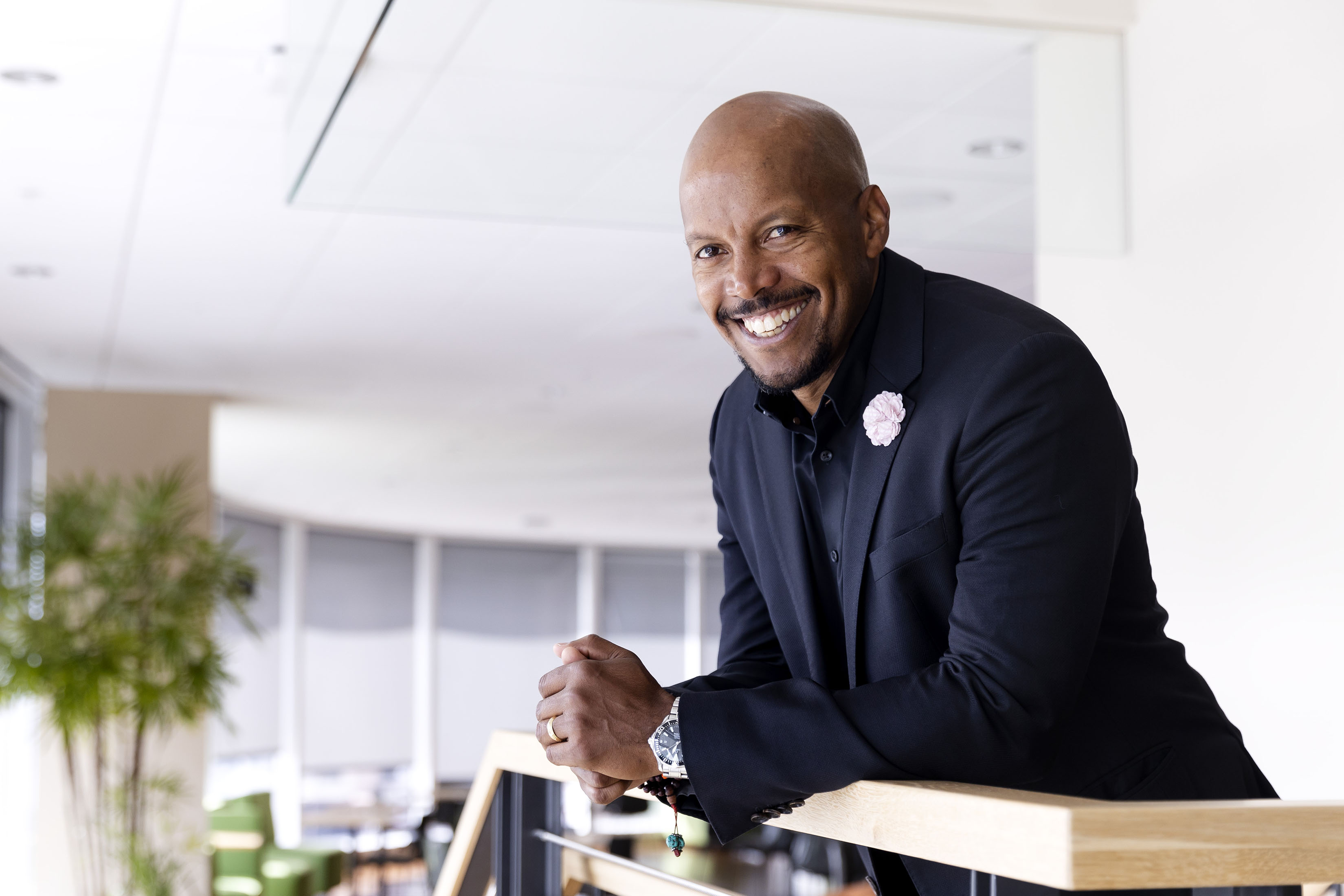Meet the President: R. Robert Wickham ’93, SM ’95
-
-
MIT Technology Review
Recommended

When members of the Class of ’23 flipped their brass rats at commencement, they officially joined a community of nearly 145,000 MIT alumni living around the globe. R. Robert Wickham ’93, SM ’95—who happens to live nearly halfway around the world, or 10,512 miles from Killian Court—begins his one-year term as MIT Alumni Association president on July 1.
Wickham hails from Trinidad and Tobago, where he played on the record-breaking 1987 under-19 cricket team—captained by high school classmate and legendary batsman Brian Lara—before earning his Institute degrees in Course 16 and an MBA from Harvard Business School. Today he’s based in Melbourne, Australia, and is vice president and general manager Tableau Asia Pacific, a maker of data visualization software, as well as a public speaker and frequent media contributor.
Wickham has also built a notable CV as an MIT volunteer. He is a past member of the MIT Corporation, the MITAA Board, and the Annual Giving Board and served for many years as an educational counselor (EC), career advisor, and mentor. Wickham has earned several alumni service awards, including the MITAA’s highest honor, the Bronze Beaver Award, in 2014.
Robert, can you tell us how your MIT experience has informed the trajectory of your life and career?
Growing up where I did and how I did—a humble beginning with a single parent who was a primary school principal—I actually didn’t know about MIT until I read about it in a university guide. But I had from an early age a passion for science and technology, along with sport, and an interest in math and calculus. So I applied, got in, and showed up that fall on campus, sight unseen.
The four years I spent as an undergrad and two years as a grad … it was just a magical experience that changed my life. My first-year roommates, the teammates I played alongside—these are still my best friends.
But the most important thing that I got out of my experience was learning how to learn. This is a lifelong skill, building the confidence to tackle problems by breaking them down into pieces. You build these muscles at MIT and only strengthen them over time.
What inspired you to stay connected to that experience as a volunteer?
There’s no question that I’m passionate about the Institute and the joy of the time I spent there. After I graduated, I wanted to do more to ensure that others can access that same impactful experience. I volunteered to become an EC, hoping to help bring to MIT students who have those qualities of perseverance and resilience, who want to expand their worldview, who have a curiosity that always asks, “Is there a better way we can be doing this?” And from there, I just kept taking on more volunteer roles.
Your MITAA presidency will coincide with the first full academic year in office of the Institute’s new president, Sally Kornbluth. How does the MITAA hope to engage her with the alumni community?
I was already excited about stepping into this role, about helping the Association staff and volunteers coalesce around shared priorities, but that only has been heightened since President Kornbluth’s arrival. There’s no question that she is a trailblazer, and she is bringing that spirit to MIT. I know that it will only help us further supercharge our alumni.
I am also looking forward to this coming year, when President Kornbluth will be bringing the magic of MIT to communities where our alumni are living around the world.
We’re all united in one journey by the MIT qualities that connect us: our critical thinking, deep analysis, nuanced approach, and desire to solve problems, macro and micro.
How do you see the role of the MITAA president in the context of the Institute’s mission?
Being the Association president is an honor, as you are able to represent the alumni by amplifying their voices and perspectives to the Institute and its leadership, and then back the other way. It’s a bi-directional responsibility.
Today’s world is so noisy, and it’s hard for signals to get through when there are so many of us alumni around the world. This role can help amplify the Institute’s signal to ensure that the Association helps our community come together in support of MIT’s efforts to meet today’s fundamental challenges—climate change, attacks on science, uneven access to tech, income inequality, and more.
What are the priorities that you are most excited about during your time in office?
I mentioned the challenge of breaking through the noise right now. Life today is like being on a 747 plane, in that you can settle into your seat and hyperfocus on what is right in front of you, but you also lose track of the speed and direction you’re going in.
The MITAA can help orient the “passengers”—our alumni—by reminding them that we’re all united in one journey by the MIT qualities that connect us: our critical thinking, deep analysis, nuanced approach, and desire to solve problems, macro and micro.
To that end, the Association recently refreshed its strategic plan for the next three years. We want to ensure that the MITAA continues to provide meaningful ways for our alumni to connect with one another and with the Institute, no matter how near or far away they are from MIT—in terms of both years and miles.
As someone who lives a bit of distance from Cambridge myself, I am excited about ensuring the Association’s relevance by energizing the global connectivity of our community. The impact of MIT alumni transcends zip codes and time zones.
This article also appears in the July/August 2023 issue of MIT News magazine, published by MIT Technology Review.
Photo: Brittany Hosea-Small







